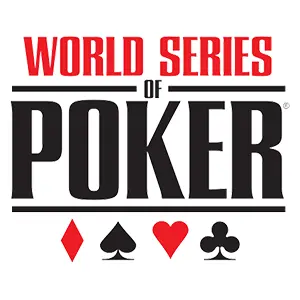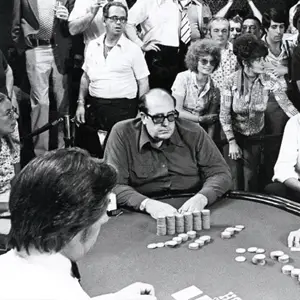The Roaring Eighties

Due to the increasing publicity of the World Series of Poker and Jack Binion’s efforts to bring in more skilled professionals, the WSOP main event grew significantly. In 1982, Benny Binion’s vision of the main event reaching over 100 entrants became a reality. This milestone was significant and marked a major achievement.
When Jack Strauss first sat down to play ten years earlier, there were only eight entrants. Fittingly, in the year this milestone was reached, Strauss won the event. It was also the first time the champion’s prize exceeded half a million dollars. Strauss pocketed $520,000 for his first-place finish, demonstrating that perseverance pays off.
Memorable moments in the eighties
In 1983, the main event came down to Doyle Brunson, Tom McEvoy, and Rod Peate. McEvoy, fresh off winning the Limit Hold’em World Championship, faced tough competition. Despite being an underdog, Peate put up a great fight, and it took a record seven hours of heads-up play for McEvoy to secure the title. Peate later won a WSOP bracelet in 7 Card Stud Hi/Lo twelve years later.
In 1984, 140 players participated in the main event, setting another record. The final two players were Jack “The Gentleman” Keller and Byron “Cowboy” Wolford. Keller, already on a roll with a bracelet in 7 Card Stud, outlasted Wolford to win the main event and a record $660,000 prize.
The next year saw poker hall of famer T.J. Cloutier face Bill Smith. Cloutier, who won six WSOP bracelets, never won the main event. Smith, an alcoholic who played best when half drunk, timed his drinking perfectly to win the championship and a substantial prize.
After Berry Johnson’s win in 1986, Johnny Chan won back-to-back championships in 1987-88. Chan, who won a total of 10 WSOP bracelets, tied with Doyle Brunson. Brunson, preferring high-stakes cash games, lamented the growing size of the WSOP. He missed the intimate gatherings of earlier years but still valued the event of the late 80s compared to the later explosion.
Intense competition and rising stars

With less than 150 entrants, the competition was fierce, featuring many former and future bracelet winners. For example, the top 26 in 1987 included legends like Johnny Chan, Doyle Brunson, and Bobby Baldwin. The intense competition made for some serious play.
Phil Hellmuth Jr., known for his tantrums at the table, became the all-time bracelet winner with 11 wins. In 1989, at 24, he won his first and only World Championship of Poker, becoming the youngest main event winner. Hellmuth defeated Johnny Chan, who was aiming for a third consecutive title, and walked away with three-quarters of a million dollars.
By this time, the Horseshoe Casino was too small to handle the growing WSOP field. Tables were set up at other casinos, and the Binions purchased the Mint Casino to make more room. This expansion allowed them to open a full-time poker site at the Horseshoe. 1989 also marked the passing of Benny Binion, leaving his son Jack to continue his legacy. Jack Binion took the WSOP to new heights, fulfilling his father’s dream and achieving even greater success.
World Series of Poker history
- The Beginnings
- Things Start Taking Off
- The Roaring Eighties
- The Early Nineties
- Silver Bars To The Comeback Kid
- Jack Binion Gets Forced Out
- The New Millenium
- The WSOP Gets Its World Rocked
- Harrah’s Takes Over
- The WSOP Moves To The Rio
- The WSOP Grows One More Time
- The Empire Strikes Back
- The November Nine Begins
- Once In A Blue Moon
- The 2010 Championship
- The 2011 WSOP Final Table Preview
- The 2011 WSOP Championship
- The 2012 World Series Of Poker
- The 2012 WSOP October Nine